Chapter 15: Teaching with Texts Sets and Paired Texts
Introduction
It is important for teachers to use children’s literature, both fiction and non-fiction, not only in their language arts classrooms, but also in their science and social studies classrooms; teachers can even incorporate children’s literature when teaching math. National and state standards have encouraged a shift “to reflect a more equitable mix of literary and informational texts” (Neuman & Roskos, 2012, pp. 207-208). Teachers can do this is through the use of paired texts, which are “two texts related by topic or theme” (Ciecierski & Bintz, 2017, p. 479), and text sets, which are “books and articles related to a topic of study that are written at varying levels of text complexity” (Vacca et al., 2021, p. 319). Teachers should also keep in mind that the students in their classes have a range of reading levels and there are multiple factors that contribute to comprehending texts, such as “…purpose, interest, motivation, and emotional state” (Vacca et al, 2021, p. 113), so incorporating paired texts and text sets can support students’ learning of a topic with a variety of texts and levels.
Main Content
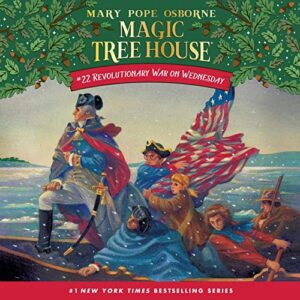 Children have loved the Magic Tree House series by Mary Pope Osborne for decades because the books share the exciting adventures of the brother-sister duo, Jack and Annie, as they travel to different places and times in the magic tree house, mixing fantasy and historical fiction. These books are written at the second grade level and are a good introduction to chapter books for readers who are becoming fluent. Over time, Mary Pope Osborne started collaborating with her husband, Will Osborne, and her sister, Natalie Pope Boyce (Fawley, n.d.) to write research guides that “provide easy-to-digest information about the times, places, and cultures Jack and Annie visit” (p. 1). In Revolutionary War on Wednesday (2000), Jack and Annie find themselves in the middle of the Revolutionary War just as George Washington and his troops are about to cross the Delaware River on Christmas 1776. The research companion on the American Revolution (Osborne & Boyce, 2004) provides factual information about the colonies, what led to war and what happened during the war. Older readers may enjoy another book that combines fantasy with historical fiction, George Washington’s Socks by Elvira Woodruff (1991), in which a group of kids step into an enchanted boat that takes them to the Revolutionary War; the characters also have an adventure with George Washington. In fact, the covers of the two books, Revolutionary War on Wednesday and George Washington’s Socks, show the characters experiencing the same historical event of crossing the Delaware River.
Children have loved the Magic Tree House series by Mary Pope Osborne for decades because the books share the exciting adventures of the brother-sister duo, Jack and Annie, as they travel to different places and times in the magic tree house, mixing fantasy and historical fiction. These books are written at the second grade level and are a good introduction to chapter books for readers who are becoming fluent. Over time, Mary Pope Osborne started collaborating with her husband, Will Osborne, and her sister, Natalie Pope Boyce (Fawley, n.d.) to write research guides that “provide easy-to-digest information about the times, places, and cultures Jack and Annie visit” (p. 1). In Revolutionary War on Wednesday (2000), Jack and Annie find themselves in the middle of the Revolutionary War just as George Washington and his troops are about to cross the Delaware River on Christmas 1776. The research companion on the American Revolution (Osborne & Boyce, 2004) provides factual information about the colonies, what led to war and what happened during the war. Older readers may enjoy another book that combines fantasy with historical fiction, George Washington’s Socks by Elvira Woodruff (1991), in which a group of kids step into an enchanted boat that takes them to the Revolutionary War; the characters also have an adventure with George Washington. In fact, the covers of the two books, Revolutionary War on Wednesday and George Washington’s Socks, show the characters experiencing the same historical event of crossing the Delaware River.
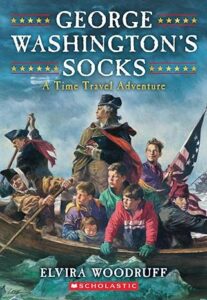
With regard to George Washington, undoubtedly the most central figure in the Revolutionary War, teachers can create a text set of biographies about his life. There are several biography series that are written on an easier level for primary students, such as Rookie Biographies’ George Washington by Wil Mara (2013) and Ordinary People Change the World’s I Am George Washington written by Brad Meltzer and illustrated by Christopher Eliopoulos (2016). Another biography written at a level more appropriate for upper elementary students is George Washington: Revolutionary Leader & Founding Father by Sari Earl (2010). To learn more about a specific aspect of George
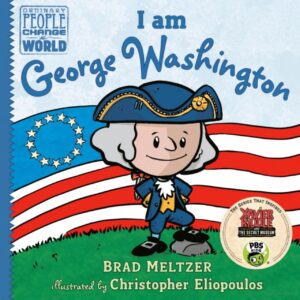 Washington’s leadership during the Revolutionary War, students can read a more complex text, George Washington, Spymaster: How the Americans Outspied the British and Won the Revolutionary War by Thomas B. Allen (2004). A fun and classic fiction book that can be added to this text set is George Washington’s Breakfast by Jean Fritz (1969) in which a boy, George W. Allen who is named after George Washington and shares his birthday, wants to find out what George Washington ate for breakfast; the book shares important information about George Washington, as well as the research that George does to learn what the great man ate. Many websites are devoted to George Washington, from the children-focused History of Kids website (2023) to the very detailed Wikipedia site (2023) on George Washington. There are many more books on George Washington that students can find in their school or local libraries!
Washington’s leadership during the Revolutionary War, students can read a more complex text, George Washington, Spymaster: How the Americans Outspied the British and Won the Revolutionary War by Thomas B. Allen (2004). A fun and classic fiction book that can be added to this text set is George Washington’s Breakfast by Jean Fritz (1969) in which a boy, George W. Allen who is named after George Washington and shares his birthday, wants to find out what George Washington ate for breakfast; the book shares important information about George Washington, as well as the research that George does to learn what the great man ate. Many websites are devoted to George Washington, from the children-focused History of Kids website (2023) to the very detailed Wikipedia site (2023) on George Washington. There are many more books on George Washington that students can find in their school or local libraries!
Harriet Tubman was a critical figure in American history as the conductor of the Underground Railroad and the various roles she had during the Civil War. Teachers can create a text set of biographies of Harriet Tubman’s life that will support their students’ learning of the pre-Civil War and 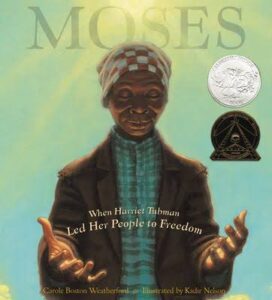 Civil War periods of American history through her life. For primary students, there are several series written on a lower level so that they can access basic information about Harriet Tubman’s life: My First Biography’s Harriet Tubman by Marion Dane Bauer and illustrated by Tammie Lyon (2010), the I Can Read! (Level 2 – Reading with Help) title Harriet Tubman: Freedom Fighter by Nadia L. Hohn and illustrated by Gustavo Mazali (2019), and the Step Into Reading (Step 4 – Reading Paragraphs) title Escape North! The Story of Harriet Tubman by Monica Kulling and illustrated by Teresa Flavin (2000). There are several picture books that can be shared as read alouds about Harriet Tubman; a few examples are A Picture Book of Harriet Tubman by David A. Adler and illustrated by Samuel Byrd (1992) and the award-winning, beautifully illustrated Moses: When Harriet Tubman Led Her People to Freedom by Carole Boston Weatherford and illustrated by Kadir Nelson (2006). A biography that is a bit more challenging is in the History Make Bios series entitled Harriet Tubman by Maryann N. Weidt (2003). An excellent chapter book for upper elementary students that provides detailed information about her life is The Story of Harriet Tubman, Conductor of the Underground Railroad by Kate McMullan and illustrated by Steven James Petruccio (1991). As with George Washington, there are many more biographies of Harriet Tubman that students can check out from the library.
Civil War periods of American history through her life. For primary students, there are several series written on a lower level so that they can access basic information about Harriet Tubman’s life: My First Biography’s Harriet Tubman by Marion Dane Bauer and illustrated by Tammie Lyon (2010), the I Can Read! (Level 2 – Reading with Help) title Harriet Tubman: Freedom Fighter by Nadia L. Hohn and illustrated by Gustavo Mazali (2019), and the Step Into Reading (Step 4 – Reading Paragraphs) title Escape North! The Story of Harriet Tubman by Monica Kulling and illustrated by Teresa Flavin (2000). There are several picture books that can be shared as read alouds about Harriet Tubman; a few examples are A Picture Book of Harriet Tubman by David A. Adler and illustrated by Samuel Byrd (1992) and the award-winning, beautifully illustrated Moses: When Harriet Tubman Led Her People to Freedom by Carole Boston Weatherford and illustrated by Kadir Nelson (2006). A biography that is a bit more challenging is in the History Make Bios series entitled Harriet Tubman by Maryann N. Weidt (2003). An excellent chapter book for upper elementary students that provides detailed information about her life is The Story of Harriet Tubman, Conductor of the Underground Railroad by Kate McMullan and illustrated by Steven James Petruccio (1991). As with George Washington, there are many more biographies of Harriet Tubman that students can check out from the library.
There are Magic Tree House books that focus more on science content, such as Midnight on the Moon (Osborne, 1996) in which Jack and Annie find themselves on the surface of the moon in a future moon base. Readers learn what it would be like to be on the moon by what Jack and Annie experience; the compa nion research guide, Space (Osborne & Osborne, 2002) provides information about astronomy, the sun, planets and moons, and various aspects of space travel. Another series of books, The Magic School Bus by Joanna Cole, combines informational text with the adventures of a teacher, Ms. Frizzle, and her students as they travel to many different places to learn about the topic of their lessons. When Ms. Frizzle and her students are going on a field trip to the planetarium in Lost in the Solar System (1990), the Magic School Bus takes them into outer space to learn about the sun and planets up close. Another fictional series, Moon Base Alpha by Stuart Gibbs, is for upper elementary and middle school readers. The first book in the series, Space Case (2014), details what it is like to live on the first colony on the moon through the experiences of the main character, 12-year-old Dashiell; life on Moon Base Alpha becomes more interesting when a scientist is found dead and Dashiell works to solve the mystery.
nion research guide, Space (Osborne & Osborne, 2002) provides information about astronomy, the sun, planets and moons, and various aspects of space travel. Another series of books, The Magic School Bus by Joanna Cole, combines informational text with the adventures of a teacher, Ms. Frizzle, and her students as they travel to many different places to learn about the topic of their lessons. When Ms. Frizzle and her students are going on a field trip to the planetarium in Lost in the Solar System (1990), the Magic School Bus takes them into outer space to learn about the sun and planets up close. Another fictional series, Moon Base Alpha by Stuart Gibbs, is for upper elementary and middle school readers. The first book in the series, Space Case (2014), details what it is like to live on the first colony on the moon through the experiences of the main character, 12-year-old Dashiell; life on Moon Base Alpha becomes more interesting when a scientist is found dead and Dashiell works to solve the mystery.
There are many non-fiction texts that can be used to create a text set on space and the solar system. Since Jack and Annie experience walking on the moon with less gravity, the book, Let’s-Read-and-Find-Out Science: Floating in Space (Branley, 1998) provides information to enhance understanding about that experience. This is just one book in the non-fiction series Let’s-Read-and-Find-Out Science about  this topic; another one is The Planets in Our Solar System (Branley, 1981) and readers can learn about many other topics in this series. A popular author of non-fiction children’s books is Seymour Simon, who wrote The Moon (2003) and Our Solar System (1992) and uses actual photographs of his many subjects to enhance the information he provides in his books. Gail Gibbons is another popular author of non-fiction children’s books and she wrote The Planets 1993) on this topic. She uses drawings instead of photographs in her books and her books tend to be more of a story that is easily used as a read aloud to students. Alphabet books can also be an excellent resource of information to use in a text set. For example, G is for Galaxy: An Out of This World Alphabet, written by Janis Campbell and Cathy Collison and illustrated by Alan Stacy (2005), combines a verse for each letter of the alphabet that relates to outer space with detailed information set in the margins to increase understanding of that aspect of the topic.
this topic; another one is The Planets in Our Solar System (Branley, 1981) and readers can learn about many other topics in this series. A popular author of non-fiction children’s books is Seymour Simon, who wrote The Moon (2003) and Our Solar System (1992) and uses actual photographs of his many subjects to enhance the information he provides in his books. Gail Gibbons is another popular author of non-fiction children’s books and she wrote The Planets 1993) on this topic. She uses drawings instead of photographs in her books and her books tend to be more of a story that is easily used as a read aloud to students. Alphabet books can also be an excellent resource of information to use in a text set. For example, G is for Galaxy: An Out of This World Alphabet, written by Janis Campbell and Cathy Collison and illustrated by Alan Stacy (2005), combines a verse for each letter of the alphabet that relates to outer space with detailed information set in the margins to increase understanding of that aspect of the topic.
 Children generally have a strong interest in animals and often take what they read and ask questions to learn more about or to see how they can help animals. This is what happened to Ivan the Gorilla who lived in a mall in Tacoma for 27 years after being brought from the Congo. For many years people of all ages came to see Ivan. Then with the mall losing a lot of stores due to the economy, people stopped coming to see him. Children and animal activists started petitioning the city to release Ivan out of captivity. It was a battle but Ivan was released to Zoo Atlanta where he learned to be a “real” gorilla. This inspired Katherine Applegate to write The One and Only Ivan (2012). It won the Newbery Medal in 2013. Even though this story is written more for the fantasy genre, Katherine Applegate followed this book up with Ivan: The Remarkable True Story Of The Shopping Mall Gorilla (2014) so that children could read the real facts about Ivan and enjoy the fantasy version as well. She did this to show children how you can take one subject and write about it several different ways. It taught real facts about Ivan and other gorillas so they could see the difference.
Children generally have a strong interest in animals and often take what they read and ask questions to learn more about or to see how they can help animals. This is what happened to Ivan the Gorilla who lived in a mall in Tacoma for 27 years after being brought from the Congo. For many years people of all ages came to see Ivan. Then with the mall losing a lot of stores due to the economy, people stopped coming to see him. Children and animal activists started petitioning the city to release Ivan out of captivity. It was a battle but Ivan was released to Zoo Atlanta where he learned to be a “real” gorilla. This inspired Katherine Applegate to write The One and Only Ivan (2012). It won the Newbery Medal in 2013. Even though this story is written more for the fantasy genre, Katherine Applegate followed this book up with Ivan: The Remarkable True Story Of The Shopping Mall Gorilla (2014) so that children could read the real facts about Ivan and enjoy the fantasy version as well. She did this to show children how you can take one subject and write about it several different ways. It taught real facts about Ivan and other gorillas so they could see the difference.
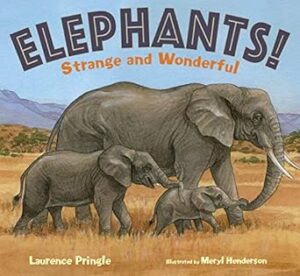 If a teacher wants to share informational texts about gorillas, like Ivan, or elephants, like Ruby, they can create a text set of informational books on those animals. To learn more about gorillas, students can read an easier book, Gorillas by Gail Gibbons (2011), or one with the same title that’s at a more difficult level by Seymour Simon (2009) or A True Book: The Most Endangered Gorillas by Katie Marsico (2017). To learn about baby elephants, an easier picture book, Baby Elephant Joins the Herd (Benjamin, 2019), would be an appropriate read aloud for the primary grades. There are other books available that have more detailed information, like Elephants by Seymour Simon (2018), Elephants! Strange and Wonderful by Laurence Pringle (2021), or Mission: Elephant Rescue by Ashlee Brown Blewett with National Geographic Explorer Daniel Raven-Ellison (2014), that students can read on their own to learn about elephants.
If a teacher wants to share informational texts about gorillas, like Ivan, or elephants, like Ruby, they can create a text set of informational books on those animals. To learn more about gorillas, students can read an easier book, Gorillas by Gail Gibbons (2011), or one with the same title that’s at a more difficult level by Seymour Simon (2009) or A True Book: The Most Endangered Gorillas by Katie Marsico (2017). To learn about baby elephants, an easier picture book, Baby Elephant Joins the Herd (Benjamin, 2019), would be an appropriate read aloud for the primary grades. There are other books available that have more detailed information, like Elephants by Seymour Simon (2018), Elephants! Strange and Wonderful by Laurence Pringle (2021), or Mission: Elephant Rescue by Ashlee Brown Blewett with National Geographic Explorer Daniel Raven-Ellison (2014), that students can read on their own to learn about elephants.
 In The One and Only Ivan, when Ivan uses his artwork to save Ruby, the young elephant, it may remind readers of a beloved classic and Newbery Honor book, Charlotte’s Web by E.B. White (1952) in which Charlotte, the spider, saves Wilbur, the pig, by writing words such as “Terrific” and “Radiant” in her spider web. Students may want to learn more about spiders and could read Spidermania: Friends on the Web by Alexandra Siy (2015), Spiders! Strange and Wonderful by Laurence Pringle (2017), or Spiders by Nic Bishop (2007). There’s also a picture book, Diary of a Spider written by Doreen Cronin and illustrated by Harry Bliss (2005) that shares a funny vision of the life of a spider written as diary entries with facts about spiders included. Readers may also enjoy learning about Charlotte’s Web author, E.B. White by reading the biography that Melissa Sweet wrote in 2016 called Some Writer! The Story of E.B. White. The book details his life, particularly his interest in words and writing from a very early age. By incorporating actual pictures and writings, Melissa Sweet shares how E.B. White thought of the ideas for his books.
In The One and Only Ivan, when Ivan uses his artwork to save Ruby, the young elephant, it may remind readers of a beloved classic and Newbery Honor book, Charlotte’s Web by E.B. White (1952) in which Charlotte, the spider, saves Wilbur, the pig, by writing words such as “Terrific” and “Radiant” in her spider web. Students may want to learn more about spiders and could read Spidermania: Friends on the Web by Alexandra Siy (2015), Spiders! Strange and Wonderful by Laurence Pringle (2017), or Spiders by Nic Bishop (2007). There’s also a picture book, Diary of a Spider written by Doreen Cronin and illustrated by Harry Bliss (2005) that shares a funny vision of the life of a spider written as diary entries with facts about spiders included. Readers may also enjoy learning about Charlotte’s Web author, E.B. White by reading the biography that Melissa Sweet wrote in 2016 called Some Writer! The Story of E.B. White. The book details his life, particularly his interest in words and writing from a very early age. By incorporating actual pictures and writings, Melissa Sweet shares how E.B. White thought of the ideas for his books.
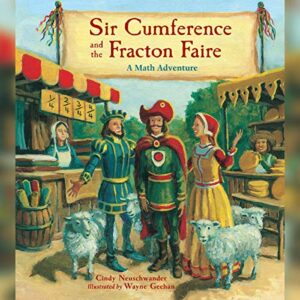 When teaching math, teachers can read children’s literature, such as the Sir Cumference series written by Cindy Neuschwander and illustrated by Wayne Geehan or Math is Categorical series written by Brian P. Cleary and illustrated by Brian Gable to enhance math concepts. A text set to introduce fractions could start with Eating Fractions by Bruce McMillan (1991) and Apple Fractions written by Jerry Pallotta and illustrated by Rob Bolster (2002). To add to students’ understanding of fractions, they can also read or listen to A Fraction’s Goal – Parts of a Whole by Brian P. Cleary (2013) and Sir Cumference and the Fraction Faire: A Math Adventure by Cindy Neuschwander (2017).
When teaching math, teachers can read children’s literature, such as the Sir Cumference series written by Cindy Neuschwander and illustrated by Wayne Geehan or Math is Categorical series written by Brian P. Cleary and illustrated by Brian Gable to enhance math concepts. A text set to introduce fractions could start with Eating Fractions by Bruce McMillan (1991) and Apple Fractions written by Jerry Pallotta and illustrated by Rob Bolster (2002). To add to students’ understanding of fractions, they can also read or listen to A Fraction’s Goal – Parts of a Whole by Brian P. Cleary (2013) and Sir Cumference and the Fraction Faire: A Math Adventure by Cindy Neuschwander (2017).
Using paired texts and text sets will support students reading development and learning of content through the use of fiction and non-fiction texts. These are just some suggestions but there are many possibilities of how to incorporate multiple texts into the classroom for many different topics.
***If you have a book recommendation for this or any chapter in this OER, please complete the Google Form: click this link.
Books
- Paired Texts on the Revolutionary War:Osborne, M.P. (2000). Revolutionary War on Wednesday. Random House.Osborne, M.P., & Boyce, N.P. (2004). Magic Tree House Research Guide: American Revolution. Random House.Woodruff, E. (1991). George Washington’s Socks. Scholastic Inc.
- Text Set on George Washington:Allen, T. B. (2004). George Washington, Spymaster: How the Americans Outspied the British and Won the Revolutionary War. National Geographic.Earl, S. (2010). George Washington: Revolutionary Leader & Founding Father. ABDO Publishing Company.Fritz, J. (1969). George Washington’s Breakfast. The Putnam & Grosset Group.History for Kids (2023). George Washington. https://www.historyforkids.net/george-washington.htmlMara, W. (2013). George Washington. Children’s Press.Meltzer, B. (2016). I Am George Washington. Dial Books for Young Readers.Wikipedia (2023). George Washington. https://en.wikipedia.org/wiki/George_Washington
- Text Set on Harriet Tubman:Adler, D. A. (1992). A Picture Book of Harriet Tubman. Holiday House.Bauer, M. D. (2010). Harriet Tubman. Scholastic Inc.Hohn, N. L. (2019). Harriet Tubman: Freedom Fighter. HarperCollins.Kulling, M. (2000). Escape North! The Story of Harriet Tubman. Random House.McMullan, K. (1991). The Story of Harriet Tubman, Conductor of the Underground Railroad. Bantam Doubleday Dell Books for Young Readers.Weatherford, C. B. (2006). Moses: When Harriet Tubman Led Her People to Freedom. Hyperion Books for Children.Weidt, M. N. (2003). Harriet Tubman. Barnes & Noble Books.
- Paired Texts on Space:Cole, J. (1990). The Magic School Bus: Lost in the Solar System. Scholastic Inc.Gibbs, S. (2014). Space Case. Simon & Schuster Books for Young Readers.Osborne, M.P. (1996). Midnight on the Moon. Random House.Osborne, W., & Osborne, M.P. (2002). Magic Tree House Research Guide: Space. Random House.
- Text Set on Space:Branley, F.M. (1998). Let’s-Read-and-Find-Out Science: Floating in Space. HaperCollins. Branley, F.M. (1981). Let’s-Read-and-Find-Out Science: The Planets in Our Solar System. HaperCollins.Campbell, J., & Collison, C. (2005). G is for Galaxy: An Out of This World Alphabet. Sleeping Bear Press.Gibbons, G. (1993). The Planets. Holiday House.Simon, S. (1992). Our Solar System. Scholastic Inc.Simon, S. (2003). The Moon. Simon & Schuster Books for Young Readers.
- Paired Texts for The One and Only Ivan: Applegate, K. (2014). Ivan: The Remarkable True Story of the Shopping Mall Gorilla. Houghton Mifflin Harcourt.Applegate, K. (2012). The One and Only Ivan. HarperCollins.
- Text Set on Gorillas and Elephants Connected to The One and Only Ivan:Blewett, A.B., & Raven-Ellison, D. (2014). Mission: Elephant Rescue. National Geographic Society.Gibbons, G. (2011). Gorillas. Holiday House.Marsico, K. (2017). A True Book: The Most Endangered Gorillas. Children’s Press.Pringle, L. (2021). Elephants! Strange and Wonderful. Boyds Mills Press.Richmond, B. (2019). American Museum of Natural History: Baby Elephant Joins the Herd. Sterling Children’s Books.Simon, S. (2018). Elephants. Harper.Simon, S. (2009). Gorillas. Collins.
- Paired Texts for Charlotte’s Web:White, E.B. (1952). Charlotte’s Web. Harper & Brothers.Sweet, M. (2016). Some Writer! The Story of E.B. White. Houghton Mifflin Harcourt.
- Text Set on Spiders Connected to Charlotte’s Web: Bishop, N. (2007). Spiders. Scholastic Nonfiction.Cronin, D. (2005). Diary of a Spider. Joanna Cotler Books.Pringle, L. (2017). Spiders! Strange and Wonderful. Boyds Mills Press.Siy, A. (2015). Spidermania: Friends on the Web. Holiday House.
- Text Set on Fractions:Cleary, B.P. (2013). A Fraction’s Goal – Parts of a Whole. Millbrook Press.McMillan, B. (1991). Eating Fractions. Scholastic Inc.Neuschwander, C. (2017). Sir Cumference and the Fraction Faire: A Math Adventure. Charlesbridge.Pallotta, J. (2002). Apple Fractions. Scholastic Inc.
Additional Resources
Author Interview: PWxyz, Q & A with Katherine Applegate
Related Resource: NPR, The true story of Tacoma’s shopping mall gorilla not as rosy as Disney version
References
- Ciecierski, L.M., & Bintz, W.P. (2017). Tri-texts: A potential next step for paired texts. The Reading Teacher, 71(4), 479-483. doi: 10.1002/trtr.1649
- Fawley, B. (n.d.). The Facts Behind the Fiction Educators Guide. Random House Children’s Books. https://www.magictreehouse.com/wp-content/uploads/0-the-facts-behind-the-fiction.pdf
- Neuman, S.B., & Roskos, K. (2012). Helping children become more knowledgeable through text. The Reading Teacher, 66(3), 207-210. doi: 10.1002.TRTR01118
- Vacca, R.T., Mraz, M., & Vacca, J. (2021). Content area reading: Literacy and learning across the curriculum (13th ed.). Pearson Education, Inc.

